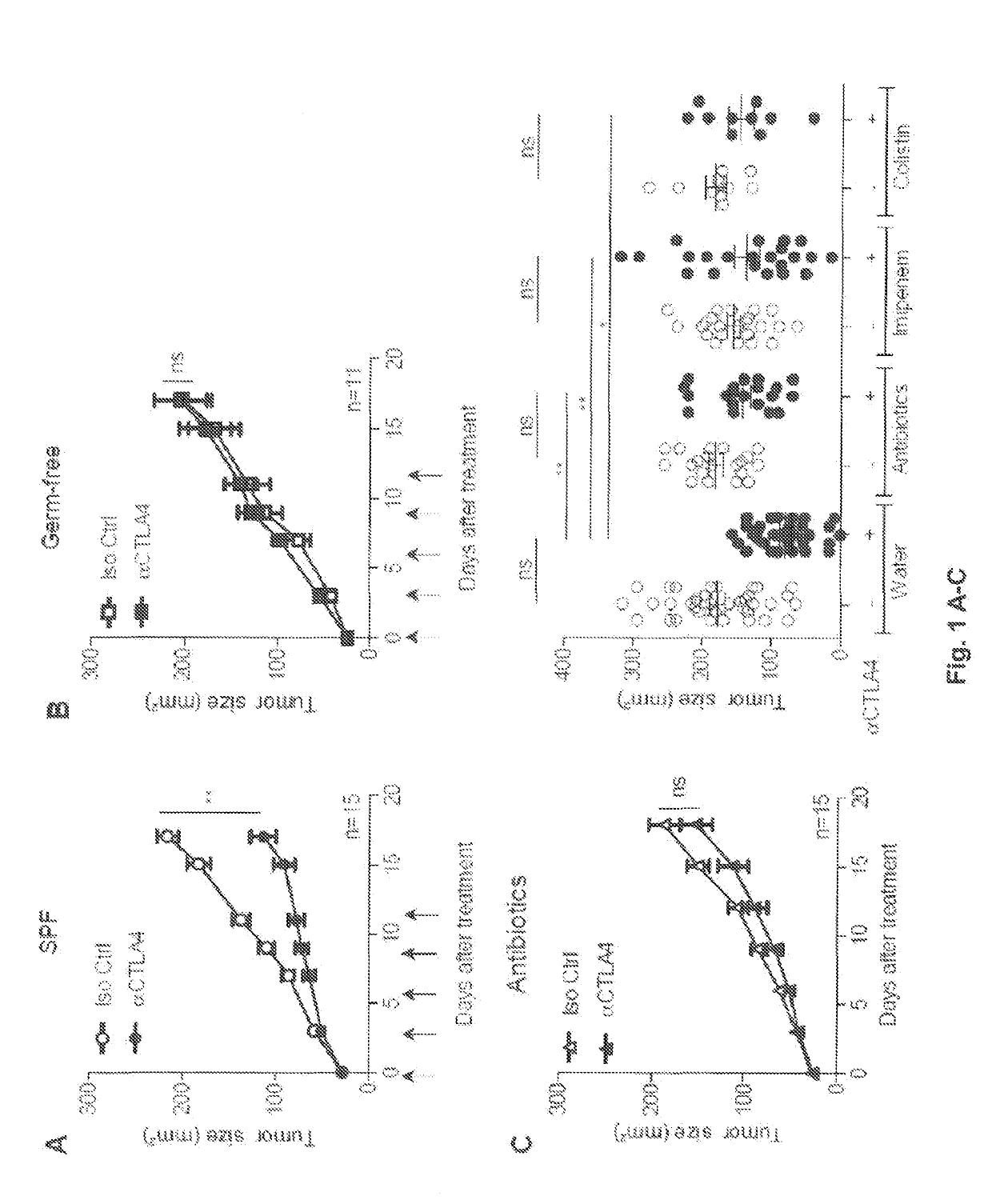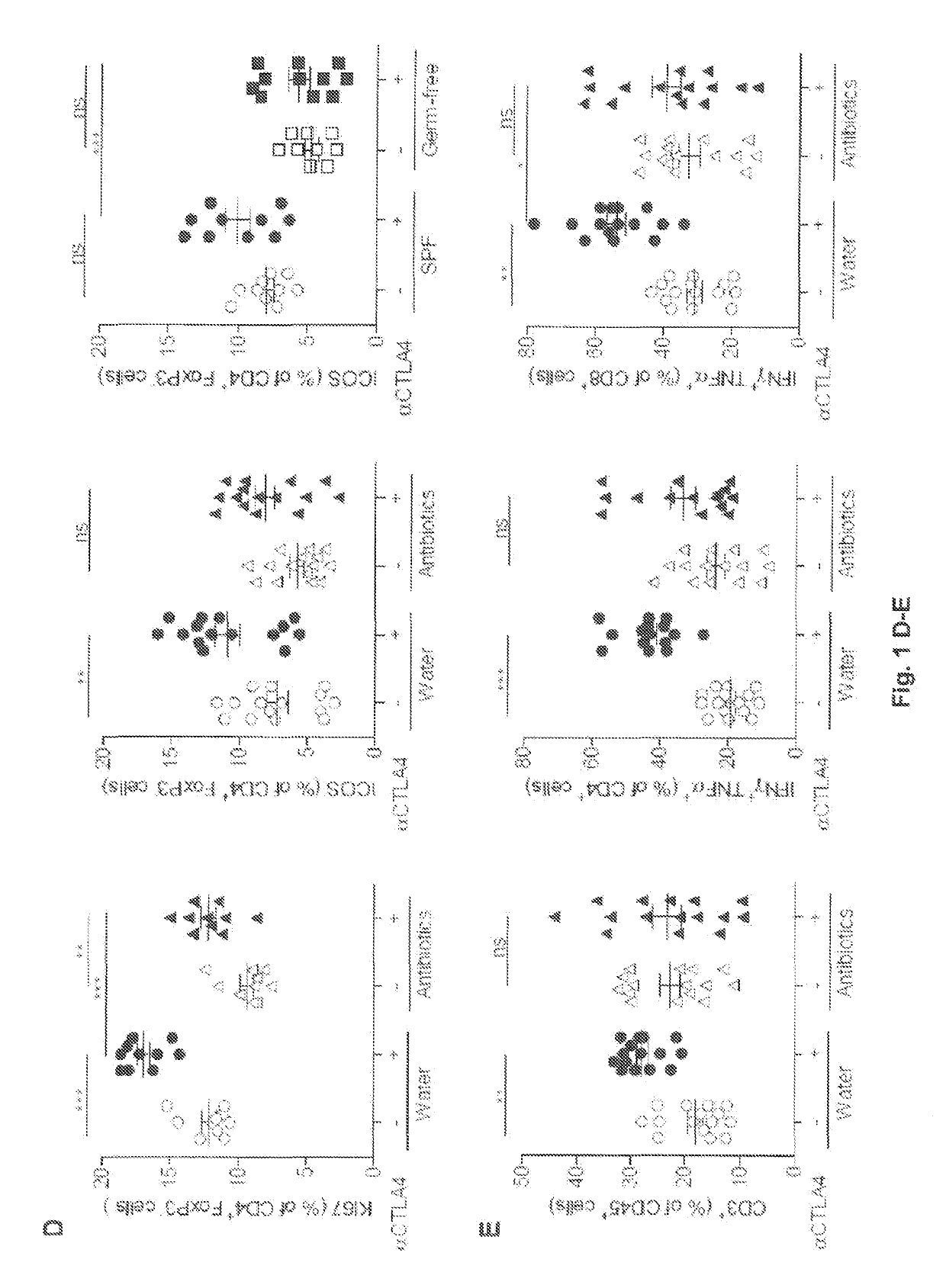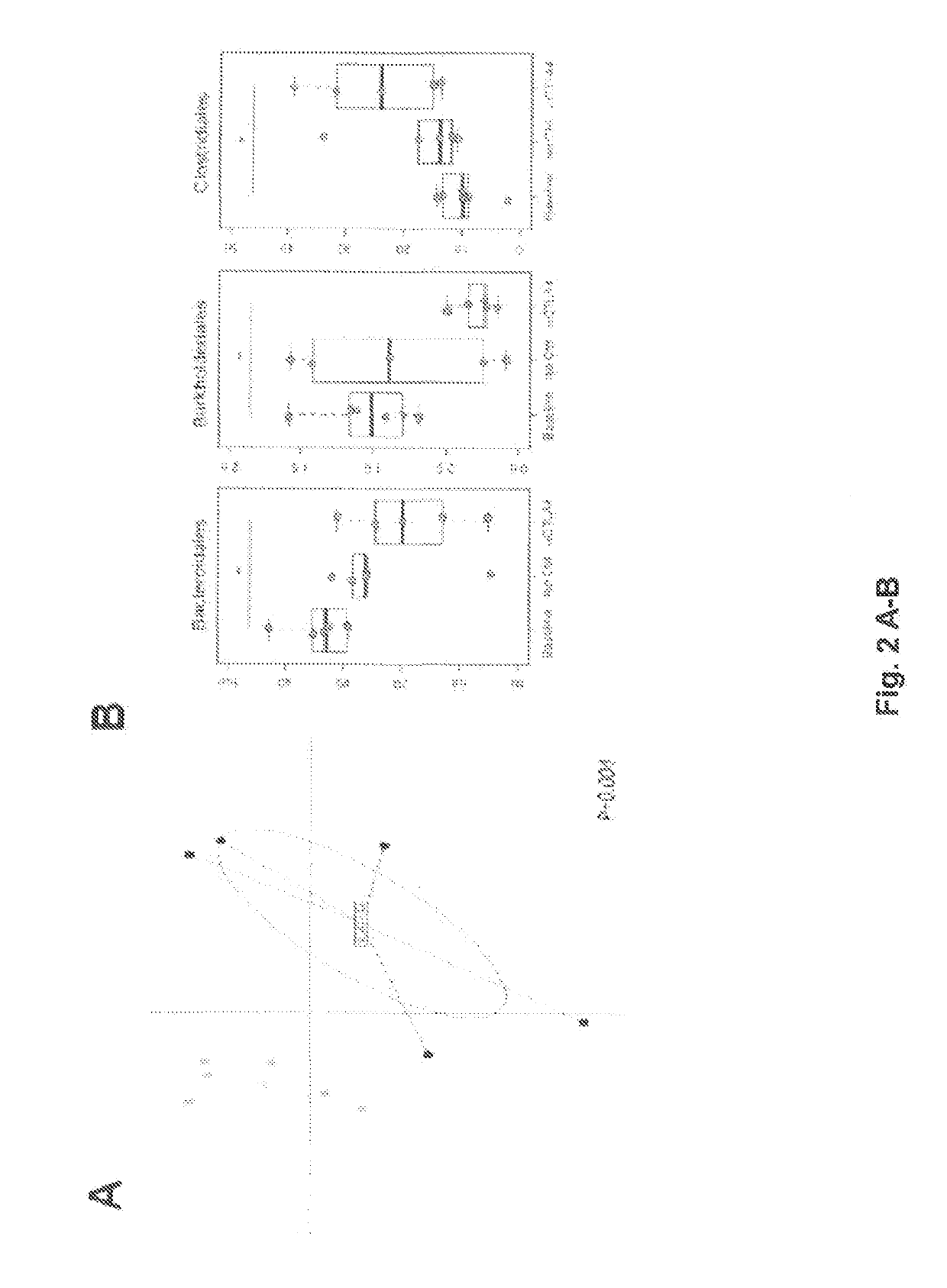Methods and products for modulating microbiota composition for improving the efficacy of a cancer treatment with an immune checkpoint blocker
a technology of immune checkpoint blocker and microorganism, which is applied in the field of anticancer treatment, can solve the problems of compromising the delicate symbiosis, poor appreciation of microorganisms inhabiting our intestine and other portals of entry so far, and compromising the anticancer efficacy of alkylating agents and platinum salts in germ-free conditions, and achieves good performan
- Summary
- Abstract
- Description
- Claims
- Application Information
AI Technical Summary
Benefits of technology
Problems solved by technology
Method used
Image
Examples
example 1
r Immunotherapy by CTLA4 Blockade Relies on the Gut Microbiota
[0128]Abbreviations List:
[0129]ACS: antibiotic treatment with ampicillin, colistin and streptomycin, Bc: Bukholderia cepacia, Bf: Bacteroides fragilis, BM-DC: Bone marrow-derived dendritic cells, CTLA-4: Cytotoxic T-Lymphocyte Antigen-4, DC: Dendritic cells, EMA: European Medicine Agency, FDA: Food and drug administration, FITC: fluorescein isothiocyanate, FMT: fecal microbiota transplant, GF: Germ-free, GM-CSF: Granulocyte-macrophage colony-stimulating factor, HV: Healthy volunteers, IBD: Inflammatory bowel diseases, ICB: Immune checkpoint blocker, ICOS: Inducible T-cell costimulatory, IL-12: Interleukin-12, LP: Lamina propria, mAb: Monoclonal antibody, MHC II: class II molecules, mLN: Mesenteric lymph node, MM: Metastatic melanoma, MOI: Multiplicity of infection, NOD2: Nucleotide-binding oligomerization domain-containing protein 2, PCA: Principle component analysis, PD1: Programmed cell death protein 1, PSA: Polysacchar...
example 2
of Feces Clustering and Assessment of its Clinical Relevance
[0192]Additional Materials and Methods
[0193]Fecal Microbiota Transplant (FMT) Experiments.
[0194]Germ-free adult female C57BL / 6J mice were obtained from CDTA (Orleans, France) and Institut Pasteur (Paris, France). Fecal samples from GOLD cohort were frozen after being homogenised with brain-heart-infusion media (BHI) supplemented with 15% glycerol (0.1 g / ml) and stored immediately at −80° C. FMT was performed by thawing the fecal material and 0.2 ml of the suspension was transferred by oral gavage into each germ-free recipient. In addition, another 0.1 ml was applied on the fur of each animal. Mice were subsequently maintained in a gnotobiotic isolator with irradiated food and autoclaved water in our animal facility (Plateforme Evaluation Préclinique, Villejuif, France). Two weeks after microbiota transfer, MCA205-OVA tumor was injected subcutaneously and mice were treated with anti-CTLA4 mAb or isotype control as follows: m...
example 3
ive Tool for the Clinical Response to CTLA4 Blockade (Alone or Combined with Immune Checkpoint Blockers)
[0199]16S rRNA pyrosequencing of feces gene amplicons in patients followed by enterotyping of feces as cluster C and to a lesser extent cluster A can predict a good clinical outcome and benefit to ICB.
[0200]As described in Example 2 above, enterotyping can be performed by pyrosequencing of gene amplicons in feces. Three clusters (A, B, C) have been identified. The relative abundance of main Bacteroides spp significantly differed between cluster B and C. FMT of feces pre-versus post-ipi from several patients falling into each of the three clusters were transferred into GF animals. Tumor growth kinetics was followed (FIG. 21C). Cluster C pre- or post-therapy and to a lesser extent cluster A (a rare enterotype in MM patients) stools from pre-therapy appeared to condition or predict the antitumor effects mediated by ipilimumab, suggesting that the immunogenic Bacteroides spp and some ...
PUM
| Property | Measurement | Unit |
|---|---|---|
| band width | aaaaa | aaaaa |
| band width | aaaaa | aaaaa |
| pH | aaaaa | aaaaa |
Abstract
Description
Claims
Application Information
 Login to View More
Login to View More - R&D
- Intellectual Property
- Life Sciences
- Materials
- Tech Scout
- Unparalleled Data Quality
- Higher Quality Content
- 60% Fewer Hallucinations
Browse by: Latest US Patents, China's latest patents, Technical Efficacy Thesaurus, Application Domain, Technology Topic, Popular Technical Reports.
© 2025 PatSnap. All rights reserved.Legal|Privacy policy|Modern Slavery Act Transparency Statement|Sitemap|About US| Contact US: help@patsnap.com



